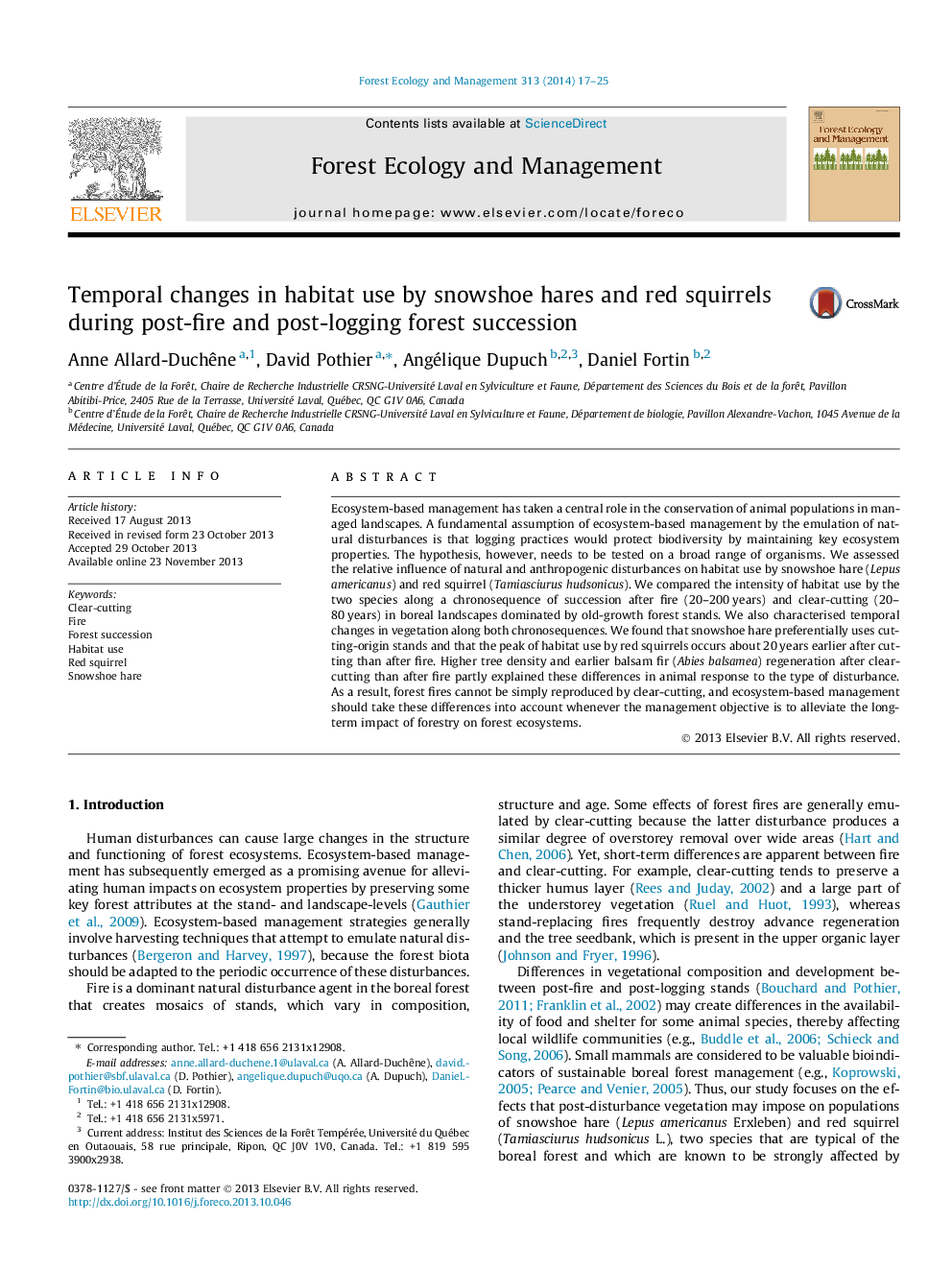| کد مقاله | کد نشریه | سال انتشار | مقاله انگلیسی | نسخه تمام متن |
|---|---|---|---|---|
| 86575 | 159199 | 2014 | 9 صفحه PDF | دانلود رایگان |
• Logging practices should protect biodiversity by maintaining key ecosystem properties.
• Habitat use by wildlife was compared after fire and after clear-cutting.
• Fire and clear-cutting generate different habitat conditions over the long-term.
• Red squirrel and snowshoe hare used differently post-fire and post-logging habitats.
• The effects of forest fire cannot be simply reproduced by clear-cutting.
Ecosystem-based management has taken a central role in the conservation of animal populations in managed landscapes. A fundamental assumption of ecosystem-based management by the emulation of natural disturbances is that logging practices would protect biodiversity by maintaining key ecosystem properties. The hypothesis, however, needs to be tested on a broad range of organisms. We assessed the relative influence of natural and anthropogenic disturbances on habitat use by snowshoe hare (Lepus americanus) and red squirrel (Tamiasciurus hudsonicus). We compared the intensity of habitat use by the two species along a chronosequence of succession after fire (20–200 years) and clear-cutting (20–80 years) in boreal landscapes dominated by old-growth forest stands. We also characterised temporal changes in vegetation along both chronosequences. We found that snowshoe hare preferentially uses cutting-origin stands and that the peak of habitat use by red squirrels occurs about 20 years earlier after cutting than after fire. Higher tree density and earlier balsam fir (Abies balsamea) regeneration after clear-cutting than after fire partly explained these differences in animal response to the type of disturbance. As a result, forest fires cannot be simply reproduced by clear-cutting, and ecosystem-based management should take these differences into account whenever the management objective is to alleviate the long-term impact of forestry on forest ecosystems.
Journal: Forest Ecology and Management - Volume 313, 1 February 2014, Pages 17–25
